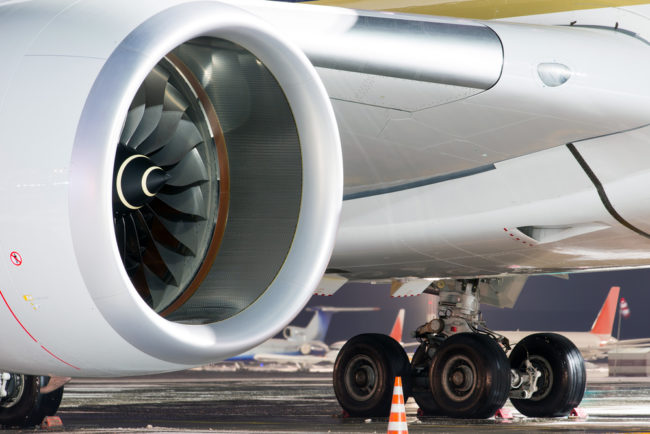Advanced design and technology in the aerospace industry has seen a significant increase in the use of lightweight materials including aluminium and titanium.
Superalloys containing cobalt and nickel are often used in jet engines as they can withstand high temperatures exceeding 1400°C. Aerospace metals often have one thing in common: they are highly demanding during manufacture, requiring specific tools to aid precision engineering.
- Handheld drills
Surprisingly, manual tools such as drills are still in high demand in business, especially the aerospace industry in spite of advanced robotics and automation processes. Various parts of an aircraft such as the fuselage often consist of a polymer reinforced, carbon fibre composite overlaid with layers of titanium or aluminium. Although strong and highly resilient, these components are vulnerable to layer separation where assembly holes are drilled.
An experienced engineer using a manual drill exercises control over the speed of the tool, minimising the pressures involved and ultimately protecting the metal. A manual angle drill is ideal for working in awkward spaces. A pneumatic manual drill usually includes a rubber pistol grip. This enables holes to be drilled successfully without fluctuations in temperature while reducing unnecessary vibration.
- Shoulder milling machines
suffer extreme aerodynamic pressures during landing and take off procedures. The materials used for these components are typically some of the most robust alloys, including chromoly tubular steel and steel chromium molybdenum. During manufacture, these metals need tools that can produce the highest precision while maintaining an excellent surface quality. Solid carbide edges are usually effective when used with such high performance metals.
A shoulder milling tool simultaneously uses face and peripheral milling and face milling to create a high-quality plane and shoulder surface. The tool traditionally uses a 90° setting angle for machining medium to large surfaces. The equipment can include additional features such as plunge milling. When deeper shoulders are to be milled, long edge cutters generally provide reliably fast results.
- Metal cutting bandsaws
Honeycomb aluminium is used for large aircraft parts such as doors, floors and wings. It is an extruded metal that results in a sheet packed with three-dimensional rods. Thermo-bonding ensures the rods form a reliably strong, unified panel. The pre-formed metal provides superior strength while significantly reducing the overall weight of the component. The design of the metal effectively distributes weights and pressures while retaining the lightweight properties of the aluminium.
It requires specialised metal cutting bandsaws to saw through the three-dimensional profiles successfully. Variable speeds ensure the three-dimension metal is cut without splintering or tearing the aluminium. Bandsaw machines can be equipped with a range of versatile blades including robust bi-metal and carbide grit edges for superior, precision cutting. Fully automatic bandsaw machines can be pre-programmed to cut to any curved design used in aircraft components.
- Universal milling cutters
The landing gear of an aircraft must reliably withstand incredible pressures. It effectively distributes the total weight of the aircraft, while absorbing the impact of the dynamic forces involved in landing. Such aircraft components are usually manufactured from titanium, a metal with a reliably high tensile strength to weight ratio. The titanium may be an alloy reinforced with vanadium, manganese or niobium. Such complex metals and components require specific tools for cutting to shape.
The universal miller can be adapted for a variety of functions such as machining spirals, grooves or flat surfaces. A carbide cutting edge is usually the preferred option as it has superior longevity when machining robust metals such as titanium. By contrast, a stainless steel cutting edge would wear down much faster. Features of the machines could include small helix angles for machining with a low force.
- Reamers
One of the most demanding parts in an aircraft is the combustion chamber of the engine. It is a highly pressurised environment where the temperature inside often peaks at around 1900°C. The metal used in its manufacture is often a superalloy containing elements such as molybdenum, tungsten and tantalum. These metals are reliably resistant to extreme heat. When machined, they require a tool such as a reamer that can provide a superior finish on difficult to work metals.
A reamer is usually used for applications such as reaching the finished size of a pre-drilled hole. When processing a component manufactured from a superalloy, the reamer is a high precision tool that produces smooth edges. It helps ensure hole alignment and accuracy when assembling the complex parts of a combustion engine. The reamer’s carbide cutting edge may include a Physical Vapour Deposition (PVD) coating for increased durability. Typically, the coating enables the reamer to operate without a lubricant for efficient finishing of aerospace components.


